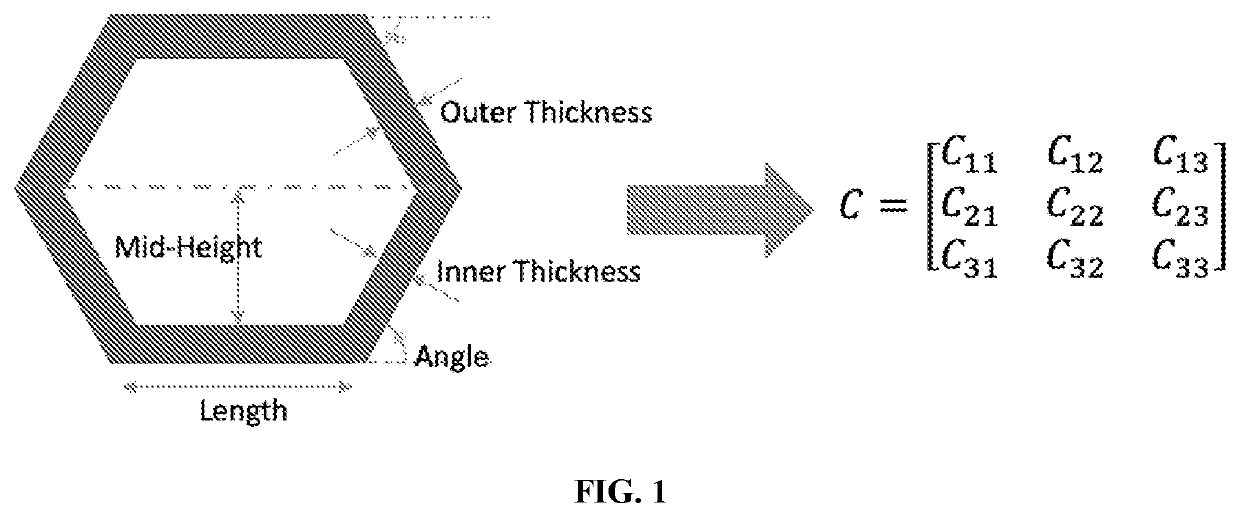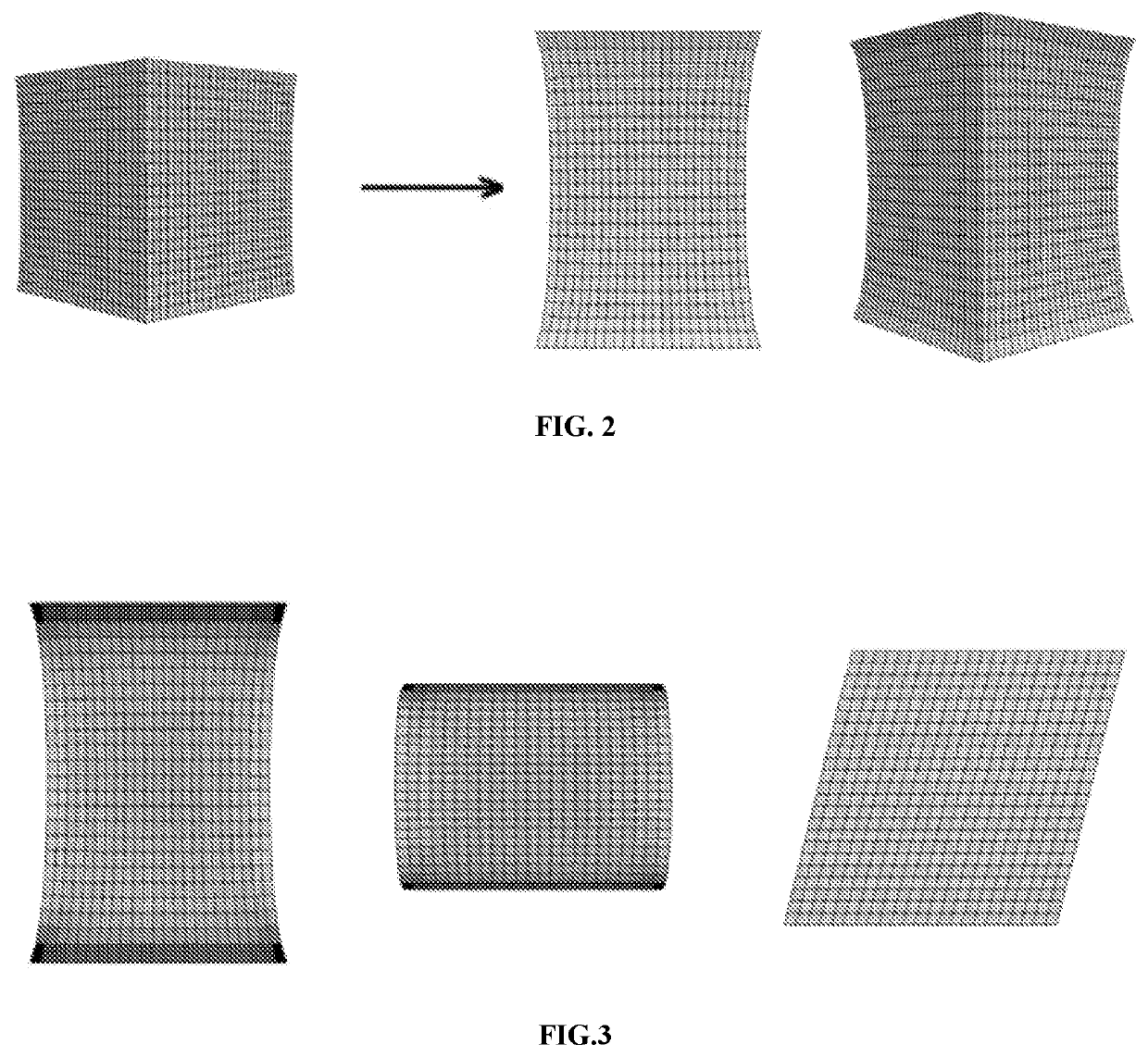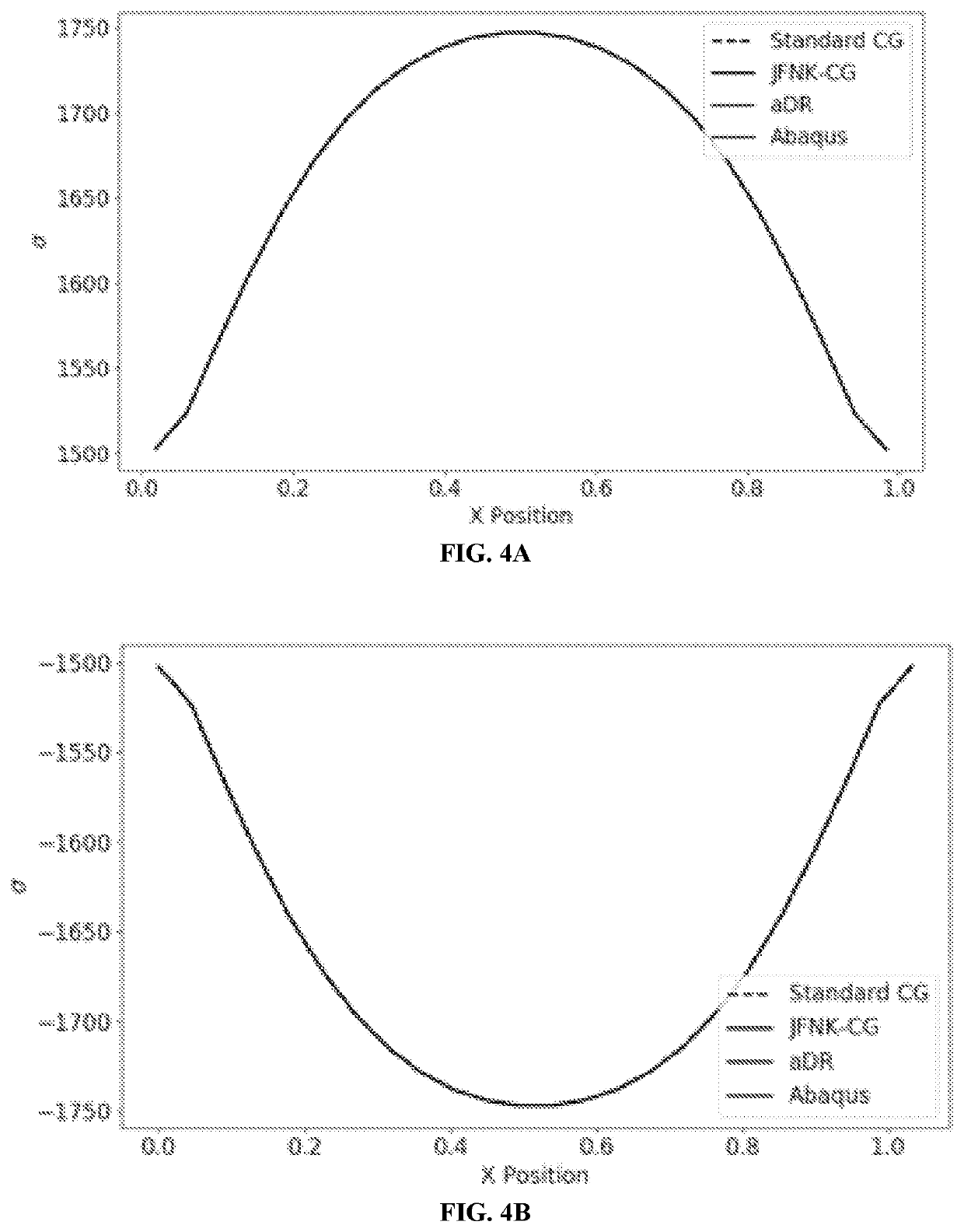Methods and systems for designing metamaterials
a metamaterial and design method technology, applied in the field of methods and systems for designing metamaterials, can solve the problems of computational cost becoming an issue, and the difficulty of finding analogous material models in all solution cases, and achieve the effect of reducing computational burden
- Summary
- Abstract
- Description
- Claims
- Application Information
AI Technical Summary
Benefits of technology
Problems solved by technology
Method used
Image
Examples
example 2
te In Bending
[0131]A 1.0 m2, 1 mm thick, elastic plate under uniform transverse loading was analyzed to evaluate JFNK's performance with shells, as illustrated by FIG. 5A. A similar problem was investigated by Hales et al. (2012), however, without the use of shell elements. The plate was meshed with 10,000 four node, single integration point shell elements. A linear elastic material model was used with Young's modulus of 207 GPa, mass density of 7.83 g / cm3, and Poisson's ratio of 0.32. The vertical displacement of this exemplary shell plate under uniform transverse loading is depicted by the graph shown in FIG. 5B.
TABLE 3Performance of Standard CG, JFNK CG, aDR, and Abaqus for Shell Plate.Peak NumberMemoryPeakSolutionofUsageDeflectionMethodIterations(MB)(mm)Standard CG123112.4817.0JFNK CG1470.2217.0Adaptive151, 6980.2416.93DynamicRelaxationAbaqus 11173.017.1Standard
example 3
l Metamaterial Unit Cell Homogenization
[0132]An elastic unit cell was homogenized to determine the elastic stiffness tensor. The unit cell was meshed with 2,616 four-node, single-integration-point, plane strain, quad elements with perturbation hourglass control (Flanagan and Belytschko 1984). A mass density of 7.83 g / cm3 and linear elastic material model with Young's modulus equal to 200 GPa and Poisson's ratio of 0.3 were used. Periodic boundary conditions were used on the left and right edges. For the case of plane strain, the generalized Hooke's law equation from Eq. (6) is replaced with
σ=E(1+v)(1-2v)[1-vv0v1-v0001-2v]ɛ(60)
where σ is the Cauchy stress tensor, E is the Young's modulus and v is the Poisson's ratio, and ε the infinitesimal strain. See FIG. 6A (depicting an acoustic cloak unit cell in accordance with this example).
[0133]Hassani and Hinton (1998) showed for 2D problems with periodic boundary conditions all of the elastic stiffness coefficients can be found through jus...
example 4
ic Preloading Of An Acoustic Cloak
[0145]A functionally graded metamaterial structure was put under hydrostatic preload. The cloak was composed of 543,312 four-node, single-integration-point shell elements with hourglass control, as shown by FIG. 7. The mass and stiffness varied by unit cell and thus varied throughout the structure. The nominal material model properties were a linear elastic model with Young's modulus of 200 GPa, mass density of 7.83 g / cm3, a Poisson's ratio of 0.32, and shell thickness of 1 mm.
TABLE 7Performance of Standard CG, JFNK CG, aDR, and Abaqus for Hydrostatic Loading.PeakNumberMemorySolution ofUsageMethodIterations(MB)Standard CG21231857JFNK CG257318.2Adaptive100, 17525.1Dynamic RelaxationAbaqus 602055Standard
PUM
 Login to View More
Login to View More Abstract
Description
Claims
Application Information
 Login to View More
Login to View More - R&D
- Intellectual Property
- Life Sciences
- Materials
- Tech Scout
- Unparalleled Data Quality
- Higher Quality Content
- 60% Fewer Hallucinations
Browse by: Latest US Patents, China's latest patents, Technical Efficacy Thesaurus, Application Domain, Technology Topic, Popular Technical Reports.
© 2025 PatSnap. All rights reserved.Legal|Privacy policy|Modern Slavery Act Transparency Statement|Sitemap|About US| Contact US: help@patsnap.com



